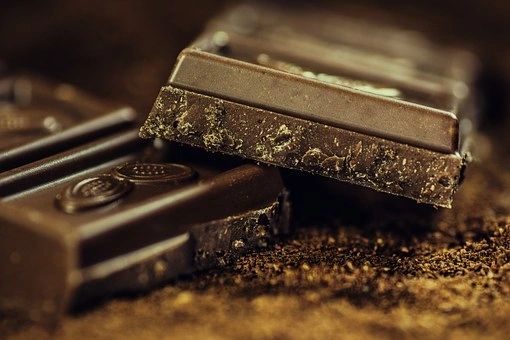Every year during the holidays, well meaning gift givers (usually adult children of diabetic parents) ask us if we carry sugar free chocolates. While the quick answer is, “No, because it doesn’t sell,” the real answer should be, “No, because it’s not as helpful as you think.”
Not that we haven’t tried…we have. Every couple of years, we decide to give it a go and create the best no-sugar chocolate we can come up with for the holidays. We’ve tried our hand at No Sugar Added almond bark, turtles, truffles and peppermint bark. And without fail, we have been forced to reduce them to a clearance price after Christmas. For every conscientious daughter trying to find a way for Dad to take his blood sugar levels seriously, there’s a Dad hiding a box of Girl Scout cookies in the glove compartment. And for good reason! No matter how great our no-sugar chocolate tastes (for no-sugar chocolate), it still doesn’t compare to a really good piece of dark chocolate.
Here’s why.
- Maltitol. Sugar Free Chocolates (and other candies), substitute the sugar with a sugar alcohol, such as maltitol. This substitute is a chemical compound derived from starch that is 90% as sweet as sugar, but lower in calories and has a lower glycemic index. The side effects however notable and include: diarrhea, flatulence, bloating and cramping. Also, maltitol absolutely contains carbs, therefore still has an effect on blood sugar.
- Erythriotol. The newer sugar alcohol on the market is starting to get traction as a “better alternative” to maltitol. Keep in mind, this is still a sugar alcohol, and still poses the potential for the exact same side effects as maltitol. It’s also used to sweeten Monk Fruit substitutes, so if you’re buying a bulk bag of Monk Fruit sweetener thinking it’s all natural, read the ingredients on the back. It’s almost always sweetened with Erythriotol.
- Calories. You’ll often see maltitol and other sugar alcohols being touted as having “half the calories of sugar,” but let’s compare a 3.5 oz. Lindt Sugar Free Chocolate Bar to a 3.5 oz. Ghiradelli 72% Dark Chocolate Bar. The Sugar Free Bar will set you back 440 calories, while the Ghiradelli will cost you 520 calories. That’s not exactly half. It’s only an 18% difference. And while 18% is significant, you’d be better off reducing the portion size to one ounce of chocolate versus dangerously assuming that you can eat any amount of a sugar free treat and call it healthy.
- Dark chocolate contains polyphenols. Polyphenols in dark chocolate may improve insulin sensitivity. In a study by ARYA Atherosclerosis, diabetics who consumed small amounts of dark chocolate (with sugar) had lower blood pressure and decreased fasting blood sugar, especially compared to those who ate other types of chocolate.
- Taste. Do not discount how a piece of dark chocolate with sugar compares to others sweetened with sugar alcohols. If a good piece of 72% dark chocolate tastes better than a sugar free alternative, you won’t need more than an ounce to satisfy your sweet tooth. If you’re craving a piece of chocolate, and are forcing down a “healthier” alternative, you will likely eat more of the substitute hoping you’ll get the same effect. According to the Cleveland Clinic, “artificial sweeteners may be likelier to make you get hungry, eat more throughout the day and develop diabetes.”
Remember, a good piece of dark chocolate goes a long way. Controlling portion sizes will help control your weight and blood sugar.

